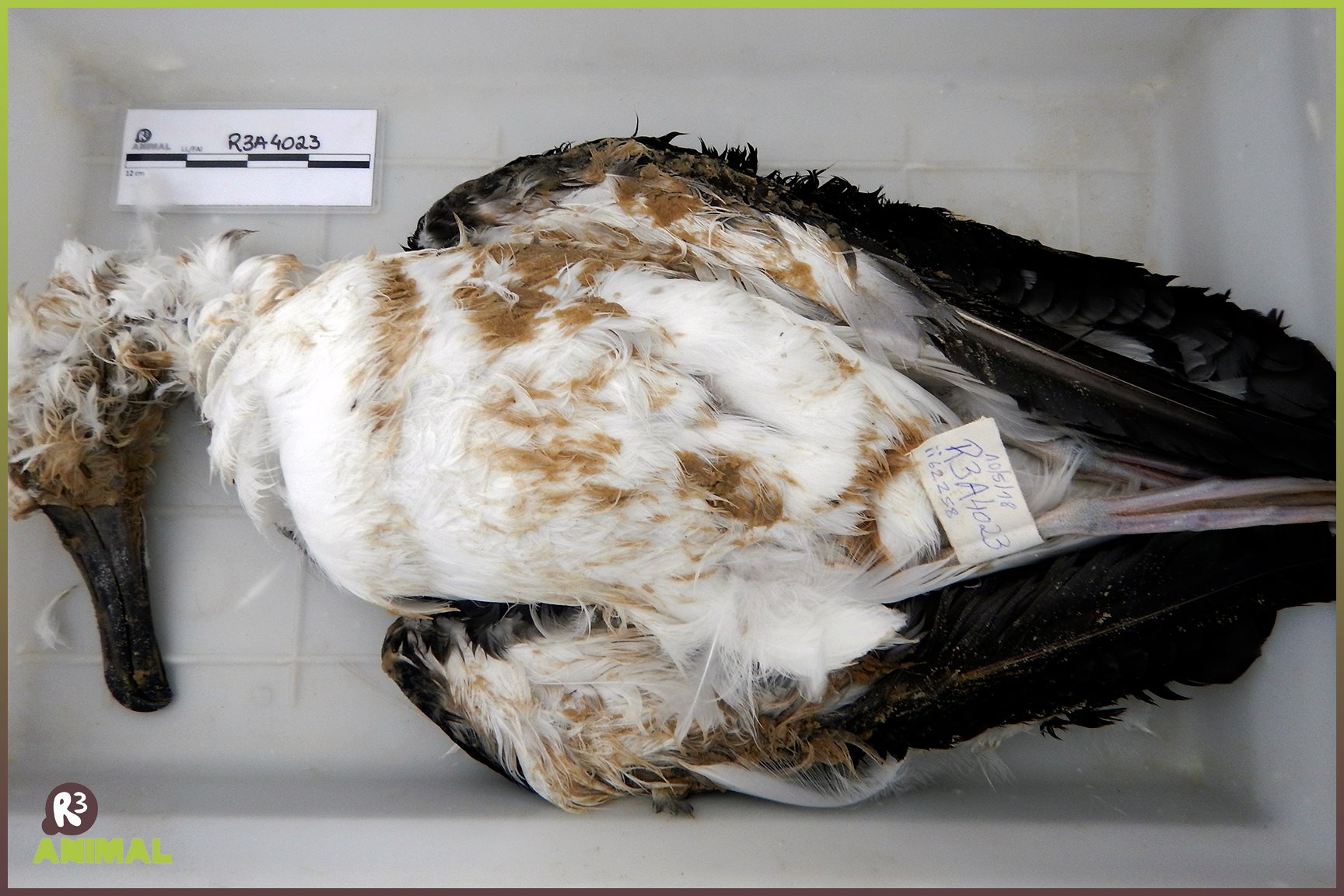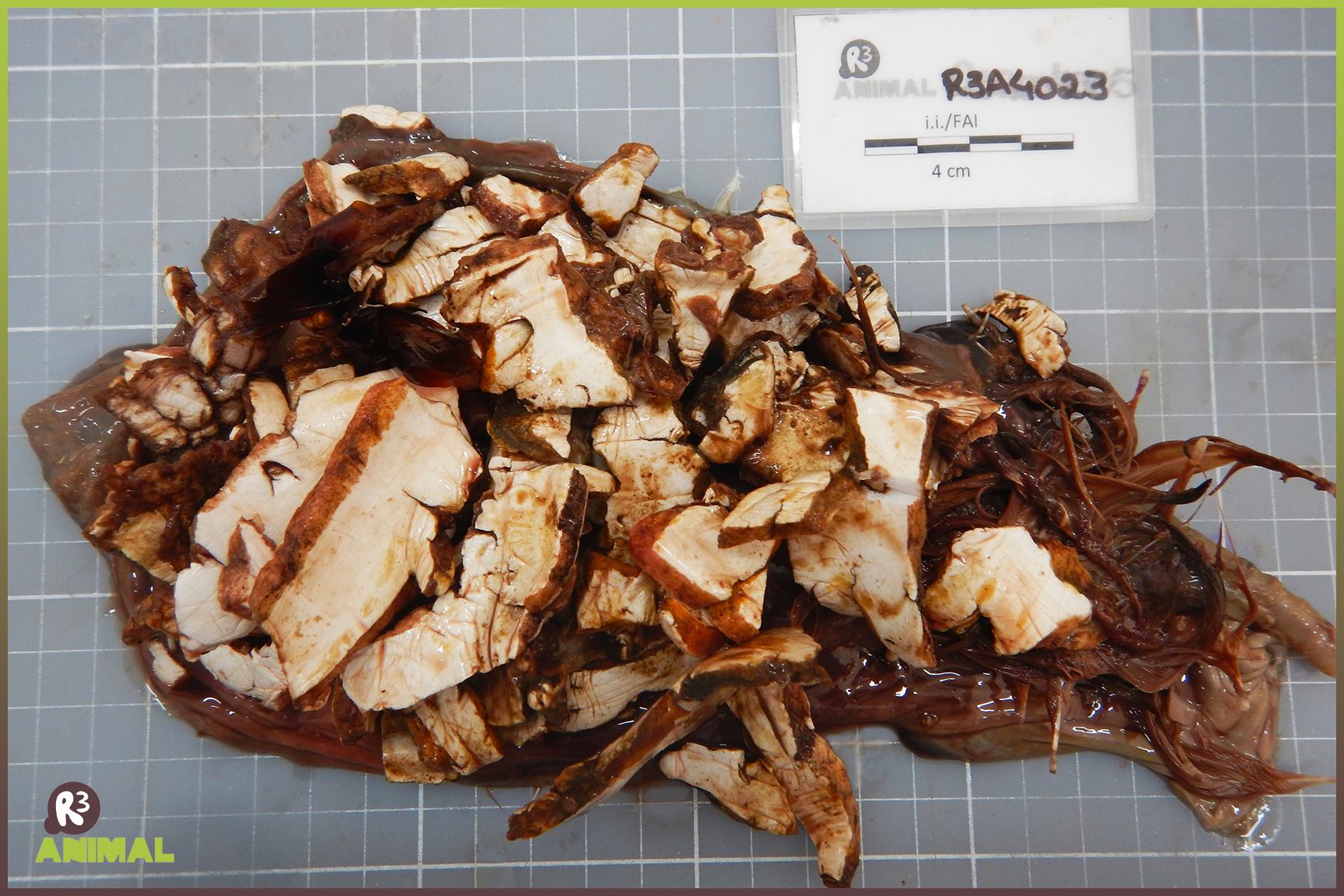The field team of the Santos Basin Beach Monitoring Project (Projeto de Monitoramento de Praias da Bacia de Santos) found the corpse of a globally Endangered Atlantic Yellow-Nosed Albatross Thalassarche chlororhynchos on Beach of the English (Praia dos Ingleses), Florianópolis, Santa Caterina Island, Brazil on 10 May this year.
The bird, that appears to have been a juvenile based on a photograph showing an all-black bill, was then necropsied, revealing the stomach contained a large number of fragments of white Styrofoam (closed-cell extruded polystyrene foam), likely to have caused the bird’s demise.

Corpse of the juvenile Atlantic Yellow-nosed Albatross

The unopened stomach

The Styrofoam fragments are obvious in the opened stomach
The Santos Basin Beach Monitoring Project aims to assess the possible impacts of oil production and disposal activities on birds, turtles and marine mammals by monitoring beaches and conducting veterinary care for live animals and undertaking necropsies of dead animals.
Read more here.
A juvenile Atlantic Yellow-nosed Albatross was found with a shoe sole in its stomach on a Brazilian shore earlier in the year (click here). It may be that recently fledged birds are more susceptible to swallowing foreign objects.
John Cooper, ACAP Information Officer, 19 June 2018

 English
English  Français
Français  Español
Español